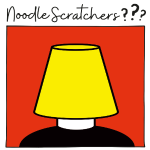Health Insurance Benefits: Understanding Your Coverage Options
Published in BenefitsWise
Choosing a health insurance plan can be a complex task, given the assortment of coverage options available. Understanding these options is crucial in selecting a plan that best suits your healthcare needs and financial situation. Four common coverage options include Preferred Provider Organization (PPO), Health Maintenance Organization (HMO), High-Deductible Health Plan (HDHP), and Catastrophic Health Insurance.
Preferred Provider Organization (PPO): PPOs offer a balance between lower out-of-pocket costs and provider flexibility. With a PPO, you have the freedom to see any doctor or specialist without a referral, and you can receive care outside your plans network, although it may be at a higher cost. PPOs typically have higher premiums but can be a suitable choice for individuals who value provider flexibility and a broad range of covered services.
Health Maintenance Organization (HMO): HMOs usually have lower out-of-pocket costs but less flexibility in choosing healthcare providers. Members must select a primary care physician (PCP) and need referrals to see specialists. Care received outside the network is usually not covered unless its an emergency. HMOs can be a good choice for those who prioritize lower costs and dont mind the restriction to a network of providers.
High-Deductible Health Plan (HDHP): HDHPs have lower premiums and higher deductibles compared to traditional insurance plans. They are suitable for individuals with good health, who do not anticipate many medical expenses. HDHPs can be combined with Health Savings Accounts (HSAs) allowing individuals to pay for qualified medical expenses with pre-tax money, which can add to the financial benefit of choosing such a plan.
Catastrophic Health Insurance: Catastrophic plans are designed primarily for young, healthy individuals who want protection against worst-case scenarios. They have low monthly premiums and very high deductibles. These plans cover essential health benefits after the deductible is met and provide certain preventive services with no out-of-pocket costs. They are a viable option for those who seek protection against high medical costs resulting from severe illnesses or injuries but are willing to pay out-of-pocket for routine healthcare expenses.
When selecting a health insurance plan, consider your medical needs, preferred healthcare providers, and budget. Assess the cost and benefits associated with each plan type, keeping in mind the trade-off between premiums, out-of-pocket expenses, and provider flexibility. By comprehensively understanding these coverage options, you can choose a plan that provides the protection and peace of mind needed to navigate the healthcare landscape effectively.
Note: These articles are not a substitute for professional financial or legal advice. Always consult professionals for your specific needs.
This article was generated by Open AI with human guidance and editing along the way.





























Comments